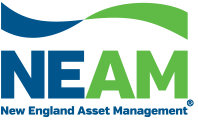Asset-Centric Optimization
An asset-centric optimization focuses solely on the investment portfolio, aiming to maximize the investment return based on the risk tolerance towards the assets, without directly considering liabilities.
Sometimes, liabilities are indirectly accommodated through applying duration constraints and reflecting liquidity requirements within the optimization. The approach effectively assumes that the investment risk appetite, in the context of the liability profile and underwriting prospects, has already been determined.
Methodology
The process of an asset-centric optimization involves:
- Determining the investment return objectives and risk constraints, e.g., eligible assets, sector ranges, credit risk allowances, interest rate sensitivity and liquidity
- Conducting mean-variance optimization to obtain asset allocations that meet the return objectives and risk constraints
Enterprise-wide Optimization
An enterprise-wide optimization takes a holistic approach, considering both underwriting and investment to determine the optimal risk and return profile for an insurer. This approach allows for the interplay between underwriting and investment, aiming to align and aggregate asset-driven and liability-driven risks and returns to enterprise-level risk preferences.
The underwriting profile is often kept stable,1 while various asset allocation options are evaluated against key enterprise metrics, such as return on equity (ROE) and Enterprise tail value at risk (T-VaR).
NEAM has been a firm believer in evaluating asset allocation options within an enterprise risk and return framework, utilizing the Enterprise Based Asset Allocation™ (EBAA™) methodology. The enterprise efficient frontier (see Exhibit A), an output from the EBAA™ process, facilitates a holistic understanding of an insurer’s risk and return profiles.

Methodology
An EBAA™ exercise begins with defining the enterprise risk capacity, which encompasses the available capital or surplus. This capacity is then aligned with the firm’s risk tolerances, preferences and stakeholder expectations. The process involves:
- Assessing risk capacity utilization across underwriting and investment, i.e. comparing the utilization against available capital resources.
- Evaluating risk budgeting to balance underwriting risk and investment risk. This involves testing various levels of investment risk budget and assessing the impact on enterprise risk and return metrics, to determine the appropriate risk budget for investment.
- Exhibit B demonstrates how an insurer’s risk capacity is assessed over various layers.2 During the process of optimizing the asset allocation, the interplay between underwriting and investment risk and return is continuously evaluated, with implications for “enterprise return” (e.g., ROE) and “enterprise risk” (as defined by the relevant risk metrics and capped by the capital available to the insurer, e.g., 99.5% Enterprise T-VaR).

Case Study
INSURER SET-UP
We assume the following operating data for a P&C insurer.

We set up an investment portfolio with 85% in investment grade fixed income and 15% in risk assets,3 with interest rate duration of 4.6 years and average credit rating of A+. Key statistics of the Current investment portfolio will be shown in the Comparison of Modeling Results section below.
Investment Objectives and Key Constraints
Keeping things simple, we assume that the investment objective is to maximize the total investment return over the next 12 months, and constrain risk asset allocation to 25% or lower. For ease of comparison, we have anchored the risk budget at the current enterprise risk level.
Comparison of Modeling Results
We ran an enterprise-wide optimization first, and selected Portfolio EO, which is of similar 99.5% Enterprise T-VaR to the current situation.
We then ran an asset-centric optimization and picked Portfolio AO, which is the optimal portfolio of the same 99.5% Asset T-VaR of Portfolio EO.

The three portfolios can be regarded as being of “similar risk,” depending on the optimized risk target. Nevertheless, there are differences in risk metrics, i.e., Portfolio EO’s Asset T-VaR is higher than that of the Current portfolio, even though the Enterprise T-VaR is the same. This is due to Portfolio EO being better at harnessing the diversification between underwriting and investment.

Table 3 shows the asset allocations and some portfolio statistics. As shown in Table 2, the two portfolio options have higher Asset T-VaR (18.5% of Capital) than the Current portfolio (16.9% of Capital). Observations (comparing Portfolios EO and AO against the Current portfolio):
1. Both Portfolios EO and AO opt for extending interest rate duration (from the Current portfolio’s 4.6 years), with slightly different duration targets (i.e., 5.5 years and 5.3 years, respectively).
2. There is a small difference in the level of BBBs (Portfolio EO’s is slightly lower than the Current portfolio’s, while Portfolio AO maintains the same level), but both the average credit rating (i.e. remaining at A+ level) and expected credit default loss persist.
3. There are broadly consistent sector movements, namely: significant reduction in allocation to Cash/Govt/Agcy, Inv Grade Credit and Taxable Munis, adding Structured Assets (Agency RMBS, ABS/CMBS), and adding US / Intl Equities and Bank Loans. It’s interesting to see that the allocation can vary significantly between Portfolios EO and AO (e.g. RMBS-Agency). Where the allocation is identical, there are significant differences in sub-sector allocation (e.g., within the 11% allocation US/Intl Equity, there are significant differences in the allocation to sub-sectors, such as Small Cap Equity and High Dividend Equity).
Enterprise Risk and Return Profile
For EBAA™ exercises, we’ve found that senior management at insurers engage very strongly to discuss the enterprise risk and return profile. In particular, they are interested in evaluating various asset allocation options and the corresponding risk and return metrics against their corporate strategy, including capital allocation preferences.
For Portfolio AO, we have calculated enterprise-level metrics, even though the portfolio has been arrived at without directly considering the underwriting aspect. These are listed alongside its other metrics.

Results in Table 4 show:
a. Portfolio AO has a slightly lower ROE than Portfolio EO (both showing enhancement in returns on the Current portfolio).
b. Portfolio EO has a lower 99.5% Enterprise T-VaR than Portfolio AO, indicating that the asset portfolio exhibits lower correlations to underwriting risks.
c. Clearly both optimizations are capable of identifying more efficient asset allocations than the Current portfolio. Portfolios EO and AO show a higher Asset Sharpe Ratio than the Current portfolio, with Portfolio EO’s marginally higher than Portfolio AO’s. Both portfolios also show lower correlation coefficients within the asset portfolio (Asset Correlation) than that of the Current portfolio.

For P&C insurers, it is crucial that the investment strategy is formulated in the context of enterprise risk capacity. In this case, we looked at the composition of the 99.5% T-VaR (as a % of Capital). Table 5 shows that:
i. Both Portfolios EO and AO suggest higher asset tail risk, i.e., 18.5% of Capital, compared to the Current portfolio’s 16.9%.
ii. Through higher Asset-Product Diversification, Portfolio EO still achieves the same level of Enterprise T-VaR as the Current portfolio (46.9% of Capital). Portfolio AO’s diversification with insurance products is slightly lower than that of Portfolio EO, leading to a slightly higher Enterprise T-VaR (47.4% of Capital).
Given that this calculation is heavily influenced by assumptions (i.e., the dependency structure of investments and insurance products), as part of the EBAA™ process, we perform stress tests to evaluate whether the insurer has sufficient risk capacity to implement the investment strategy being considered.
Conclusion
An asset-centric optimization takes the investment risk budget as an input and generates asset allocation options within that budget. While this approach is straightforward, it does not directly model underwriting risk, thus not accounting for any diversification between investing and underwriting risks.
In contrast, enterprise-wide optimization guides insurers to appropriately size the investment risk budget by explicitly modeling the underwriting profile within the optimization. This approach identifies suitable asset allocation options to optimize enterprise risk and return metrics. It fosters strong engagement from senior management and can provide valuable insights into risk diversification across investment and underwriting. These additional insights are particularly beneficial when considering different business strategies or uncertain underwriting performance outcomes.
Key Takeaways
- Asset-centric optimizations focus on maximizing investment returns based on asset risk tolerance but does not fully consider enterprise-wide risk dynamics.
- Enterprise-wide optimizations offer a holistic risk management framework that helps balance investment and underwriting risks, supporting the insurer’s enterprise objectives.
- NEAM’s EBAA™ exercise can help determine the appropriate investment risk budget and generate suitable asset allocation options.
Endnotes
1 The underwriting profile typically reflects the business plan of the upcoming financial year. Where different scenarios are contemplated in the business planning process, these can also be modeled in the enterprise-wide optimization.
Increasingly, insurers run dedicated optimizations with the “underwriting portfolio,” through tweaking the product mix and reinsurance parameters, potentially lending to a truly holistic optimization at the enterprise level.
2 See NEAM Perspectives publication “Layering Enterprise Risk Preferences & Rewards.”
3 Risk Assets are assets beyond core fixed income asset types, such as below investment grade fixed income, equities and alternatives.
The Case Study herein is for illustrative purposes only and should not be regarded as a recommendation of any investment product or strategy. NEAM applied constraints (i.e. sector, rating, duration limits) to the Current portfolio via its Portfolio Optimization tool to generate the hypothetical estimates of return, risk and other metrics presented in the tables herein. The tools’ objective is to maximize total return on equity under these constraints using NEAM’s reinvestment set of generic securities and their attributes as of September 2024. Other investment types not considered in the reinvestment set may have superior characteristics. NEAM makes no representation or warranty as to the reasonableness of the tool, reinvestment universe or constraints applied. The EO and AO portfolios do not consider the effect of changing risk profiles, operating cash flows or future investment decisions, do not represent actual trades and may not reflect the effect of material economic and market factors, including the potential inability to execute the proposed portfolio repositioning. Actual results will differ from the information shown and include the potential for loss. Results may vary with each use of this tool and over time.
T-VaR analysis generates hypothetical estimates of portfolio Tail Value-at-Risk (T-VaR). VaR (Value-at-Risk) is the statistical estimate for the marked-to-market portfolio loss not to be exceeded within one year at a given confidence level. T-VaR is the statistical estimate for the expected amount of loss given the VaR loss limit is exceeded. T-VaR is expressed as a percent of invested assets. Diversification is the difference between the total estimated enterprise risk and sum of the asset risk and product risk. The analysis maps the theoretical holdings of the Current portfolio to corresponding indices based on security characteristics such as sector, credit, duration, currency and country. Indices are weighted proportionally to the corresponding holdings market values in the portfolio and resulting weightings are held constant. NEAM’s database of historically observable total and excess returns for these indices, which reflect income and price changes, are then used to estimate VaR and T-VaR.









